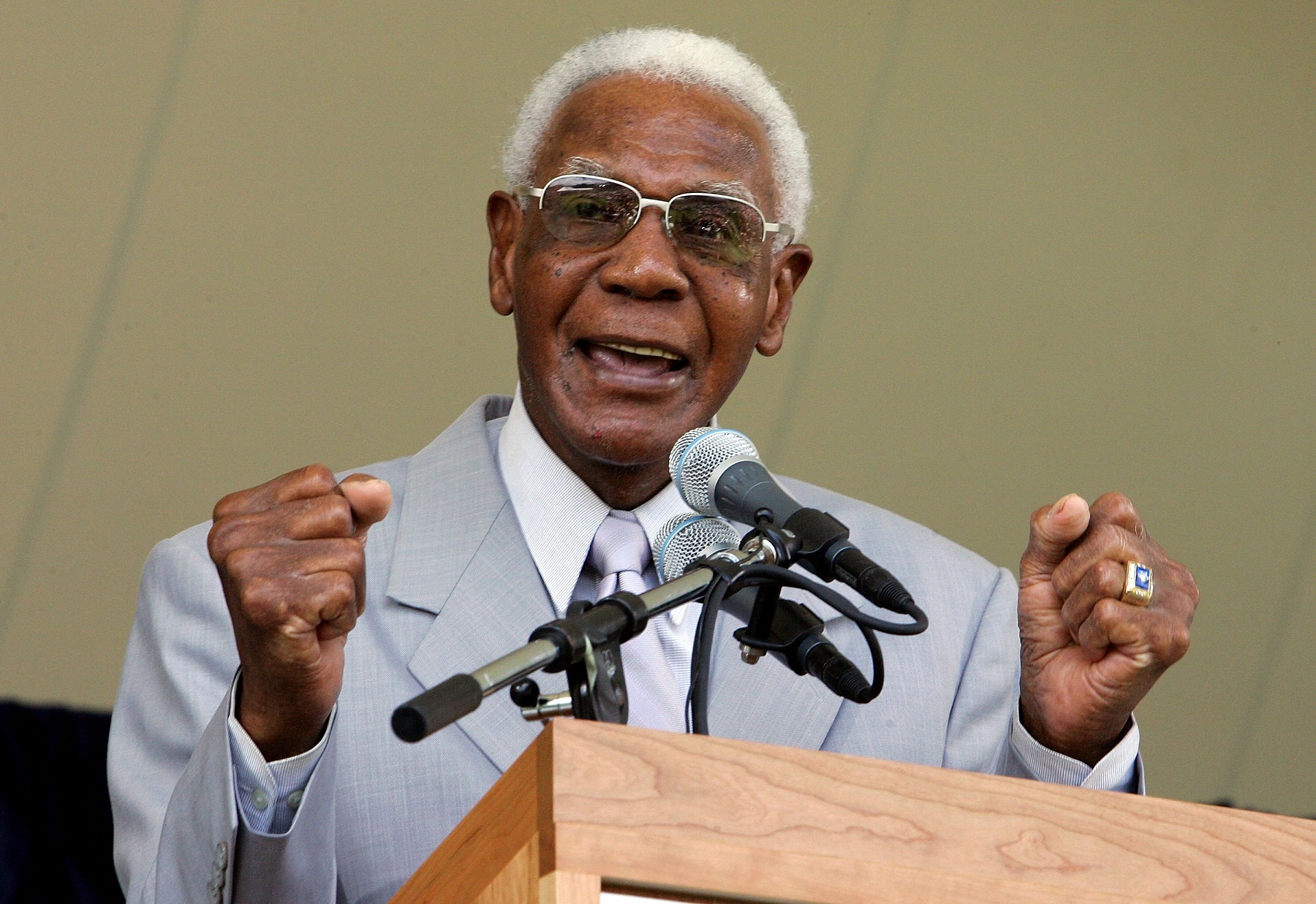MLB
The Baseball Hall of Fame Committed an Unforgivable Snub

The question of late regarding the Baseball Hall of Fame has been how long Barry Bonds and Roger Clemens will have to wait for induction in Cooperstown. Both players left the majors after the 2007 season, each with their worthiness called into question, a year after the door was slammed shut on Buck O’Neil in an unforgivable snub.
The Hall of Fame atoned for some past oversights
RELATED: MLB Draft: The 5 Lowest Picks to Make the Baseball Hall of Fame
The Baseball Hall of Fame formed special committees in 1971 and 2001 to identify Negro Leagues players worthy of induction. The premise was that wrongly excluding players who came along before Jackie Robinson broke the MLB color barrier shouldn’t keep the greatest players out of Cooperstown.
The first committee settled on nine players who joined the Hall of Fame from 1971-77. Among them were Satchel Paige, Josh Gibson, Monte Irvin, and Cool Papa Bell.
The second committee began work in 2001 through a grant from Major League Baseball. The members started with a pool of 94 names of players, executives, and contributors before cutting the list to 39 candidates. On Feb. 27, 2006, the committee chose 17 figures, including Effa Manley, the Hall of Fame’s first female inductee.
Many observers expressed surprise in finding the name of Buck O’Neil, a first baseman and teammate of Paige on the Kansas City Monarchs, missing from the list of new inductees.
Ken Burns introduced Buck O’Neil to baseball fans
RELATED: Once Again, the ‘Character Clause’ Is at the Heart of the Baseball Hall of Fame Ballot
The long-forgotten Negro Leagues received new attention in 1994 as part of the Ken Burns documentary about the sport on PBS. Burns found a treasure chest of insight in going to Buck O’Neil. Giving him a prominent voice in the episode on the Negro Leagues made O’Neil an instant celebrity at the age of 82.
Fans learned that O’Neil was regarded as one of the best defensive first basemen in that sport and that, while statistics from the era were sketchy, he was a .300 hitter (including a .353 season in 1946) and spent a large portion of his career as a player-manager.
After leaving the Monarchs, O’Neil joined for the Chicago Cubs as a scout and later as a coach. All the while he worked to keep memories of the Negro Leagues alive. In the 1990s, O’Neil led the push for the creation of the Negro Leagues Baseball Museum in Kansas City.
With such a rich career in the sport, O’Neil deserved support to be enshrined in Cooperstown when the second special committee in the Negro Leagues looked into candidates in 2001. Unfortunately, O’Neil did not make it onto the final list.
Even a former commissioner supported Buck O’Neil
RELATED: Dan Le Batard Tried to Make a Statement to the Baseball Hall of Fame but Was Banned for Life
Buck O’Neil would have been the oldest inductee into the Baseball Hall if the special committee in 2006 had selected him alongside 17 others. Instead, he died later that year at the age of 94.
That summer, O’Neil spoke at the Hall of Fame induction on behalf of the Negro Leagues inductees.
“I think it was one of the most selfless acts in American sports history,” said Negro League Baseball Museum director Bob Kendrick. The world was saying, ‘This should be your day,’ and there’s ol’ Buck speaking on behalf of those who didn’t have a voice.”
Kendrick isn’t the only person with regrets.
“We made a big mistake,” former MLB commissioner Fay Vincent, who chaired the special committee, told The Sporting News in 2016. “We should have put Buck O’Neil in the Hall of Fame. I was a big supporter, but I didn’t have a vote. And I think that was an embarrassment. Not that he was the greatest player or a great manager. But he was a great human being, and he really had a major role in keeping the Black consciousness, the Black baseball history alive.”











